Planting patterns and rules for caring for winter onions
Despite the fact that onions can be planted in both spring and autumn, most gardeners prefer the first option, since not all varieties are suitable for winter planting. At the same time, planting before winter has a number of advantages (in particular, obtaining an earlier harvest); it is only important to take into account certain nuances.
Read on to learn about planting winter onions in the fall, growing technology and care.
Advantages and disadvantages of winter onions
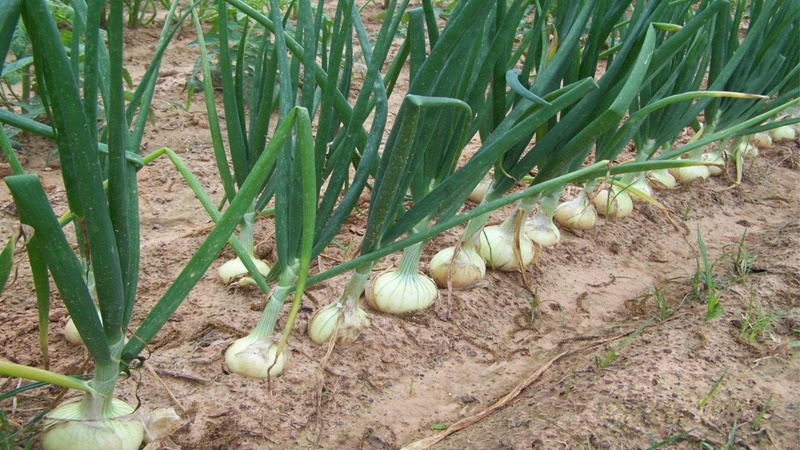
Advantages of planting onions before winter:
- the sets hardly rot;
- sprouted bulbs are not prone to bolting;
- the heads grow larger than in the case of spring planting;
- no need for abundant and frequent watering;
- early ripening of the crop;
- minimal risk of onion fly damage.
Flaws:
- lower yield;
- The shelf life of winter onions is shorter than that of spring onions.
Preparing the soil for autumn planting
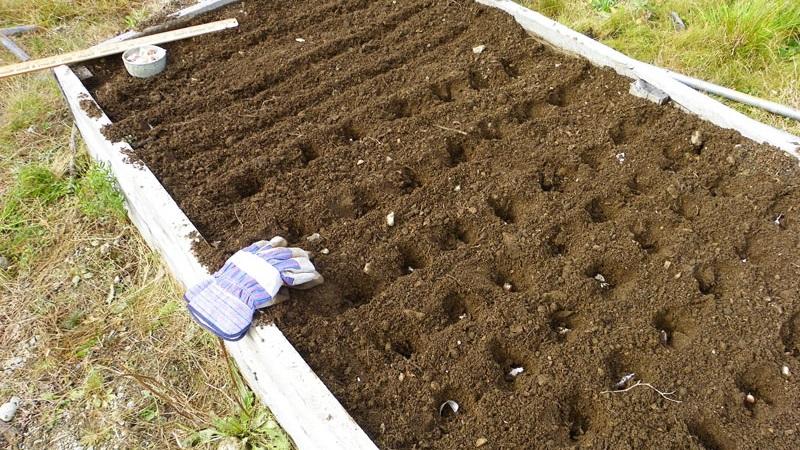
To plant onions, choose a place that is well-lit, protected from the wind and located on a hill.
The crop prefers loose, light, fertile soil with a neutral acidity level, so coarse sand is added to clayey soil, turf soil is added to sandstones, and lime, chalk, and stove ash are added to soil with high acidity and the use of bottom peat as a fertilizer is excluded.
Selection of planting material
There are several types of planting material, so before planting in the ground it is calibrated:
- wild oatmeal - bulbs less than 1 cm in diameter, suitable only for winter planting on turnips;
- sets - bulb diameter 1-1.5 cm, suitable for planting on turnips, not prone to bolting;
- selections - large bulbs with a diameter of more than 2 cm, suitable for planting only on feathers or seeds.
After calibration, bulbs of suitable size are carefully inspected. For planting, use only dry, healthy specimens without damage, unpleasant odor or signs of rot. Soft and limp bulbs, so-called dummies, are thrown away.
Winter onion varieties and hybrids
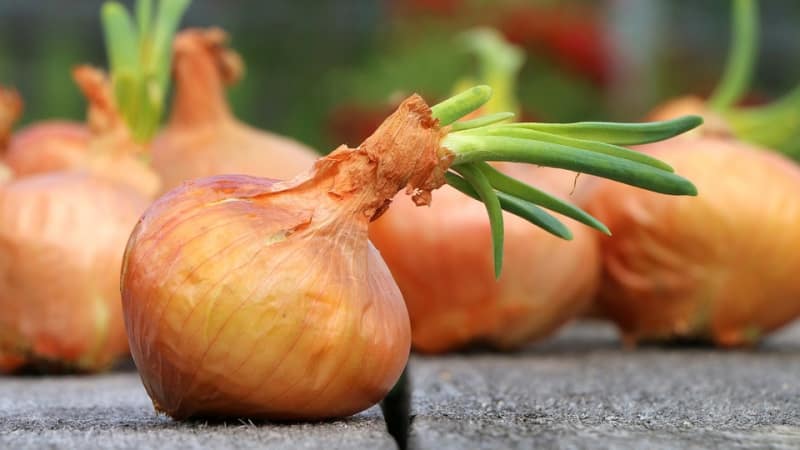
Onions that can tolerate frost and develop well in short daylight hours are suitable for planting before winter.
In the fall, the onion should have time to take root and adapt. Late varieties are not suitable for winter planting because they require long-term lighting. Bulbs of southern varieties, which reveal their qualities only under high summer temperatures, are also not suitable.
Reference. If the variety for planting before winter is chosen incorrectly, the onion will go to waste - it will not be possible to grow a full-fledged harvest.
Troy
Early maturing hybrid of Dutch selection. Forms broadly obovate-shaped bulbs, weighing 80 g. The husk is light brown, the flesh is greenish, the taste is semi-sharp. Marketable yield – 323 c/ha.
Centurion
This is mid-early hybrid first generation, bred by agronomists from the Netherlands and suitable for cultivation in all regions of Russia.
The bulbs, with an average weight of 110-150 g, have a broadly obovate shape, covered with brown-golden dry scales. The pulp is white, the taste is sharp.
Marketable yield is 252-420 c/ha. The hybrid shows resistance to downy mildew and neck rot.
Radar
Early ripening hybrid Dutch selection.It is distinguished by high frost resistance and unpretentiousness to climatic conditions and soil composition, therefore it is successfully cultivated throughout Russia.
The bulbs are transversely elliptical in shape, weighing 80-95 g, golden brown husk, white flesh, semi-sharp taste.
Productivity – 159-250 c/ha. With proper care, onions are resistant to diseases and pests.
Stuttgarter Riesen
Variety early ripening, bred by German breeders and, due to its ability to adapt to different climates, is suitable for cultivation in all regions.
The bulbs are round, slightly flattened on top and bottom, weigh 120-170 g, the husk is brown-golden, the flesh is white, the taste is semi-sharp. With proper care, the yield reaches 5-8 kg per 1 m².
Stuttgarter is resistant to most common diseases and pests, including powdery mildew, Fusarium, Alternaria, onion flies and root mites.
Shakespeare
Early ripening variety, bred in England specifically for sowing before winter, suitable for cultivation in the central and northern regions of Russia.
The bulbs are round in shape, weigh on average 90-100 g, covered with yellow-brown husk, white flesh, semi-sharp taste. Productivity – 296 c/ha.
The Shakespeare variety is resistant to diseases and rarely produces arrows.
Senshui yellow
Variety early maturing, bred by Japanese breeders. Recommended for cultivation in the southern regions, but adapts well to the climate of central Russia.
Forms bulbs of a round, slightly flattened shape, which weigh 160-180 g. Dry scales are bright yellow with a golden hue, the flesh is white, the taste is soft, sweetish. Productivity – 4 kg per 1 m².
The variety is resistant to most diseases, but sometimes it is affected by pests.
Ellan
Ellan - the result of the work of Kuban breeders. Suitable for cultivation in all regions of Russia.
This early ripening variety is characterized by rounded bulbs weighing 64-123 g, which are covered with yellow husk, have white flesh and a slightly pungent taste. Productivity – 100-250 c/ha.
Other
There are other varieties of onions suitable for winter planting:
- Arzamas. Mid-season variety, suitable for growing in central Russia and the Urals. The bulbs are round-cuboid or round, weigh 60-90 g, covered with a dark yellow husk with a brownish tint, the flesh is white, the taste is pungent. Productivity 140-320 c/ha.
- Danilovsky. Mid-season variety. The bulbs are flat and rounded-flat in shape, weigh 78-155 g. The husk is dark red with a purple tint or purple, the flesh is light lilac and light purple, the taste is semi-sharp. Productivity – 123-333 c/ha.
- Strigunovsky. The result of the work of domestic breeders is suitable for cultivation throughout Russia. The bulbs are round in shape, weigh on average 45-80 g, covered with yellow with pink or light gray husk. The pulp is white, the taste is sharp. The variety is an early ripening variety, the yield is 118-327 c/ha.
In addition to onions, chives, shallots, batun, etc. are also planted in the fall to produce heads or greens.
Planting scheme and cultivation of winter onions
Winter onions have special requirements for planting and care.
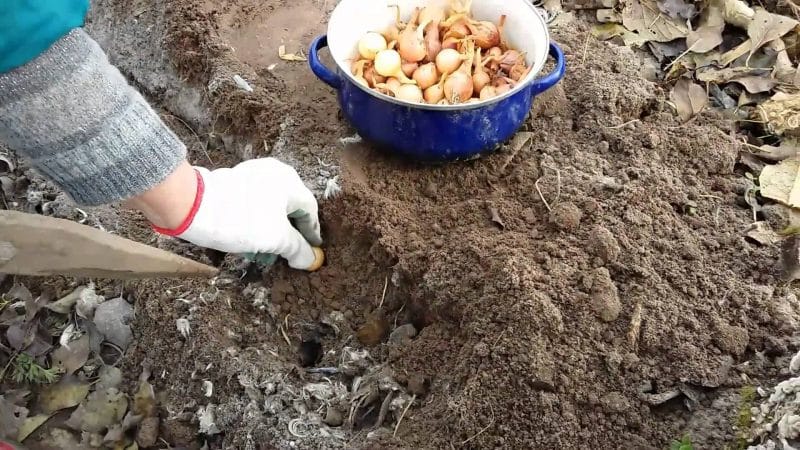
Preparation of arable land and planting material
Preparation of planting material consists of two stages:
- Disinfection – the bulbs are soaked in a weak solution of potassium permanganate, copper sulfate or salt to reduce the risk of developing diseases.
- Heat treatments – the seeds are immersed in hot (+65°C) water for 2-3 minutes or wrapped in natural fabric and heated in the microwave to prevent premature germination.
Before planting, the soil is carefully dug up and humus or compost is added to it - 1 bucket per 1 m². Superphosphate, wood ash (2 tablespoons each) and urea (1 tablespoon) are used as additional fertilizing.
Selection of predecessors
Compliance with the rules of crop rotation is one of the main conditions for the successful cultivation of any crop. Proper rotation of crops guarantees a bountiful and high-quality harvest.
The best predecessors of onion sets are corn, peas, tomatoes, cabbage, lettuce, legumes and cereals (except oats), root crops.
In the place where spring onions grew, garlic, strawberries, parsley or root celery, onions are planted no earlier than after 4 years.
Planting by seeds
Onion seeds are planted in frozen soil before winter so that they begin to germinate only in the spring. Sprouts do not tolerate frost.
Compared to spring planting, before winter the seeds are sown more densely, and after planting they must be covered with spruce branches or non-woven material.
Reference. It is undesirable to use peat as a shelter, because it allows moisture to pass through and there is a risk of ice crust forming during the first thaw.
Planting with bulbs
Planting bulbs depends on their size:
- wild oatmeal – every 7-8 cm;
- sets - at a distance of 3-5 cm between the bulbs;
- samples – close to each other.
The beds must be covered with a layer of mulch, which is removed in the spring.
Planting scheme depending on variety
Planting patterns differ from each other and depend on the type of onion.
Shallot
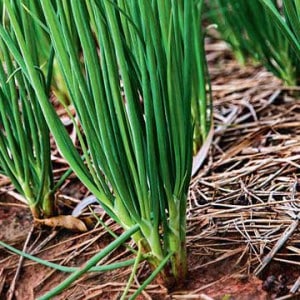
To plant shallots:
- Prepare beds 30cm apart.
- Make holes in them for planting bulbs every 15-20 cm.
- Place the planting material in the ground, deepening it by 3-4 cm.
Onion
The optimal time for planting batun is the beginning of the first frost, which in central Russia occurs at the end of November.
The distance between the rows is 20-22 cm, between the bulbs - 4 cm, and the planting material is buried 2 cm.
Decorative bow
Planting is carried out from September to October:
- In the prepared area, make holes 3 bulbs deep and 2 bulbs wide.
- The distance between the holes is 10-25 cm.
- The bulbs are placed in the recesses and sprinkled with earth.
- The beds are mulched.
Most often, such onions are planted to decorate the site, but there are also edible varieties.
Bulb
Onions are planted in beds located 15-20 cm from each other every 8-10 cm. The bulbs are buried 3-4 cm so that the necks are 1-2 cm below the soil.
Features of caring for winter onions
Caring for winter onions begins with removing the winter cover from the beds in the spring. As long as the soil remains moist after the snow melts, it should not be watered. Then watering is carried out as needed - when the top layer of soil is completely dry.
Loosen the soil after each watering and at the same time get rid of weeds that impede the development of onions. In case of dense planting, it is thinned out so that the distance between plants is at least 2-3 cm.
Feeding
Feeding schedule for winter onions:
- 2 weeks after the appearance of spring shoots, nitrogen fertilizers are applied to stimulate the growth of green mass: 30 g of ammonium nitrate, 40 g of superphosphate and 20 g of potassium chloride per 10 liters of water.
- After 3 weeks - complex fertilizer: 30 g of ammonium nitrate, 60 g of superphosphate and 30 g of potassium chloride per 1 bucket of water.
- The third feeding is aimed at the formation of turnips. To do this, water the onions with a specially prepared solution: 40 g of superphosphate, 20 g of potassium chloride per 10 liters of water.
Harvesting
A signal that the crop is ready for harvest is the lodging of the leaves and the acquisition of the color characteristic of the specific onion variety by the husks.
The heads are carefully dug up with a shovel or pitchfork so as not to damage them and pulled out of the ground. Then the onions are laid out on the beds or under a canopy and left for several days to dry. After this, the feathers and roots are cut off with sharp scissors, and the bulbs are left to dry for another 3-5 days.
Store the harvest in wooden boxes or cardboard boxes with holes for ventilation in a cool and dry room.
Useful tips
Experienced farmers recommend:
- When choosing fertilizers, consider the purpose of growing onions. To produce greens, nitrogen-containing fertilizers are used, and for the harvest of heads, potassium-phosphorus fertilizers are used.
- To protect plantings from frost, cover the beds with dry leaves, pea or bean tops. This will prevent the onions from freezing and increase the nutritional value of the soil.
- The winter onion crop has a shorter shelf life: use it first.
Conclusion
Growing winter onions is not as difficult as it seems at first glance. If you follow the timing and rules of planting, use a suitable sowing scheme and properly care for the plants, even a novice gardener can get a rich and high-quality onion harvest.